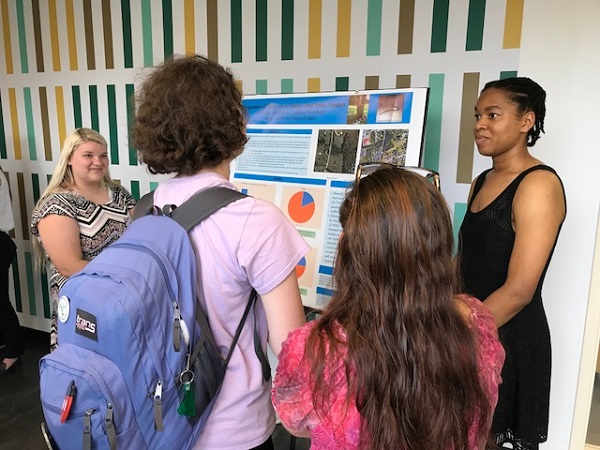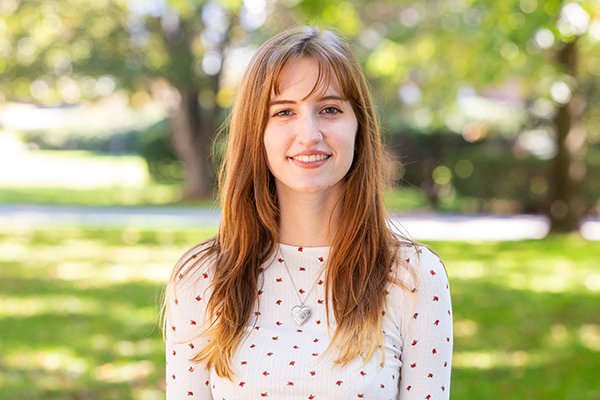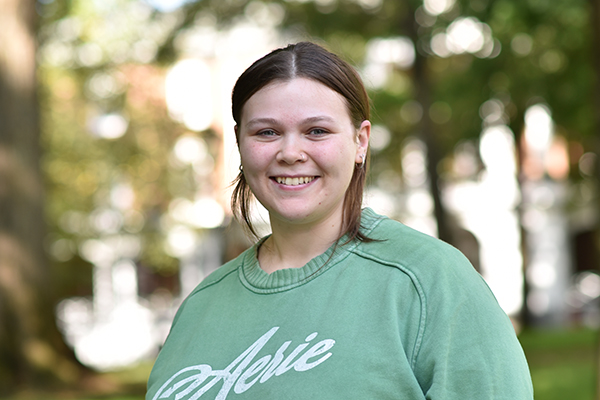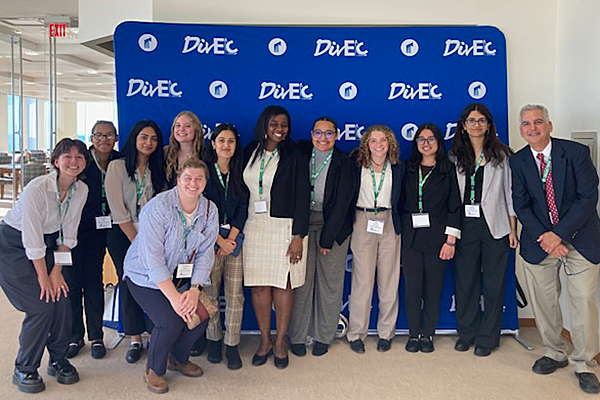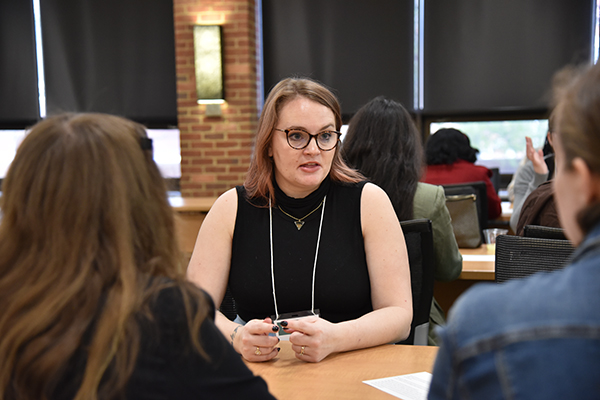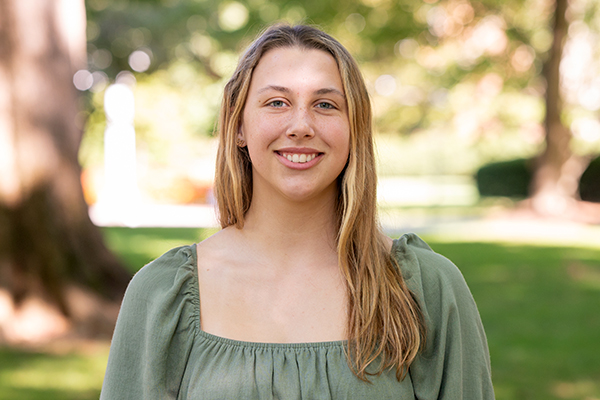Twenty-seven research projects representing the work of 30 Hollins science and mathematics students were showcased during the university’s 62nd Annual Science Seminar on April 25.
Students from the departments of biology, chemistry, environmental studies, physics, and psychology took part in this year’s poster session, which was held for the first time on the newly renovated second floor of the Dana Science Building.
This year’s seminar featured research conducted in a number of diverse geographic locations, from South America (the Peruvian Amazon’s white-sand forests), Central America (Panamanian coastal habitats), and the Caribbean (biodiversity and hurricane impact in the U.S. Virgin Islands), to southwest Virginia (tick activity/species abundance and emerald ash bore infestation), the southern Appalachians (forest and cave ecosystems), and the Hollins campus itself (avian window collisions and wetlands). Students also delved into topics such as Knot Theory, stock price prediction, and parent-child interactions.
Following their undergraduate careers at Hollins, seminar participants plan to pursue a wide range of interests, which include enrolling in medical school and veterinary school; completing graduate degrees in marine science, animal science/research, ecology, clinical psychology, and chemistry; and embarking on careers in quantitative analysis, wildlife rehabilitation, environmental education, and food justice.
Among the highlights of the 62nd Annual Science Seminar was the presentation of the inaugural Ella Faith Mode Award, recognizing outstanding student research. Catherine Flayhart ’20, a chemistry major with a biochemistry concentration and a physics minor, is the award’s first honoree.
Photo: Savannah Goodbar ’20 (far left) and Autumn Woodbury ’20 (far right) share their research into vehicle driver responses to snake and stick models placed on the edge of two Virginia roads, one surrounded by rural farmland and the other in a mix of forest, residential, and light business.



